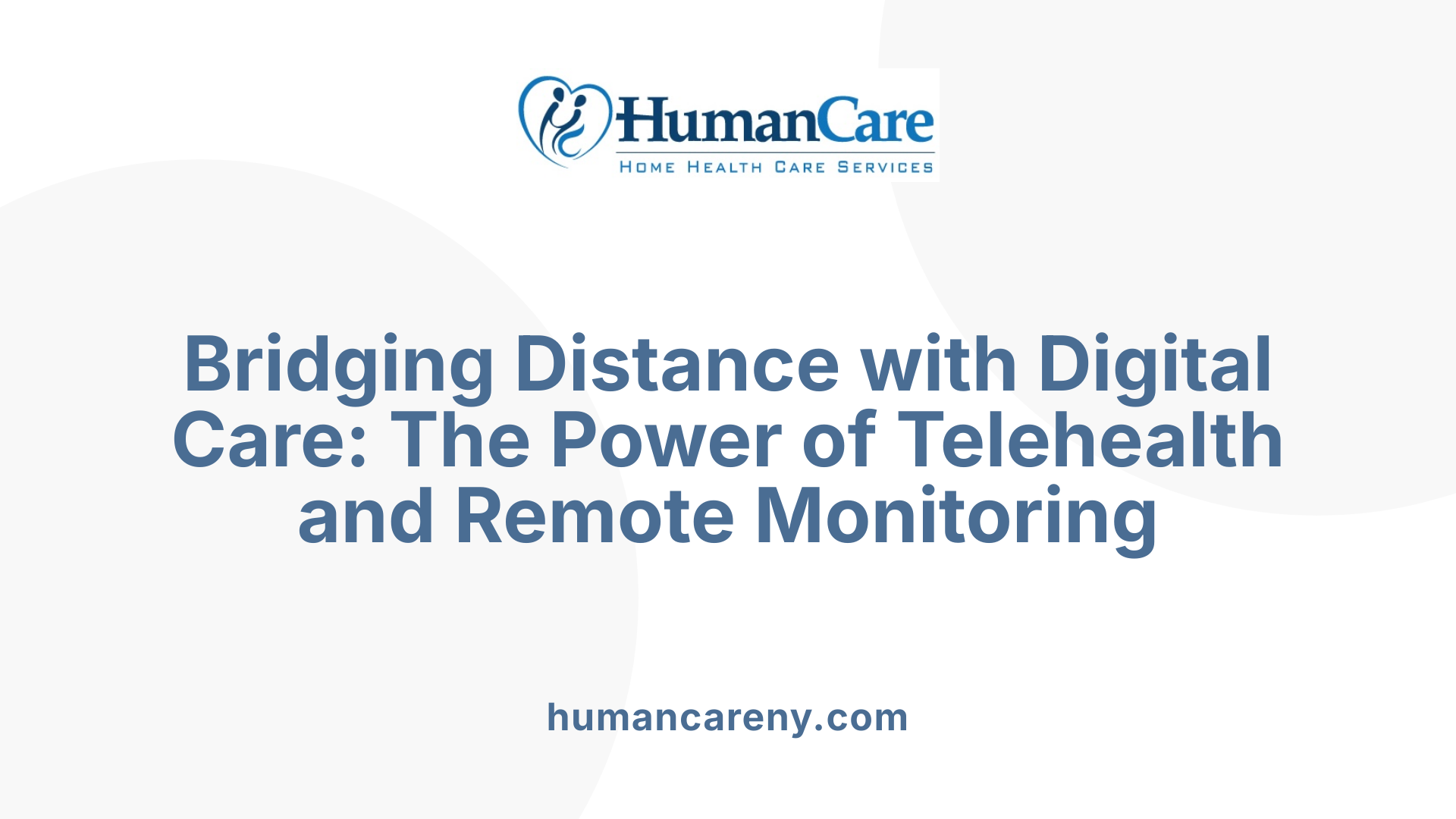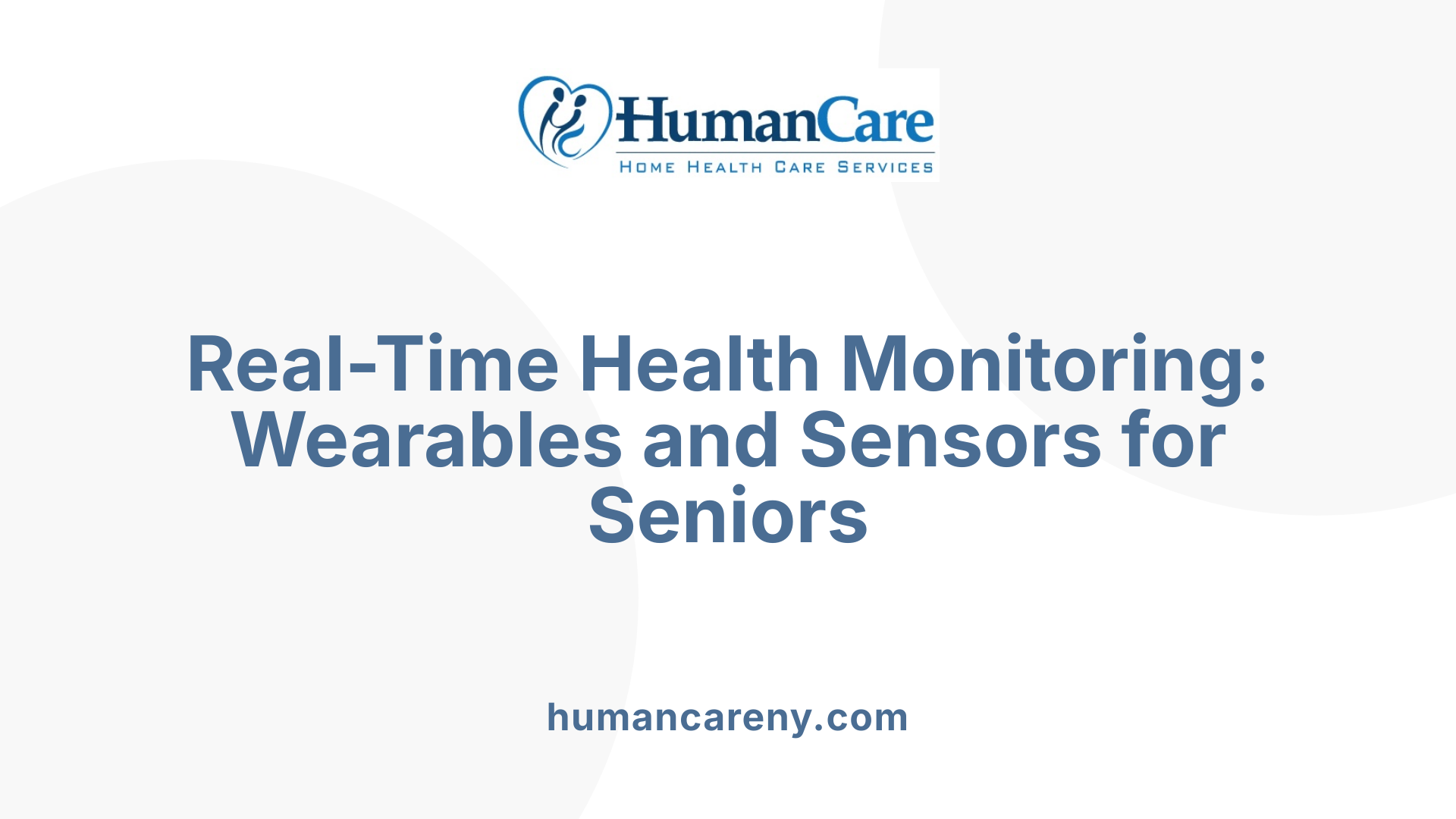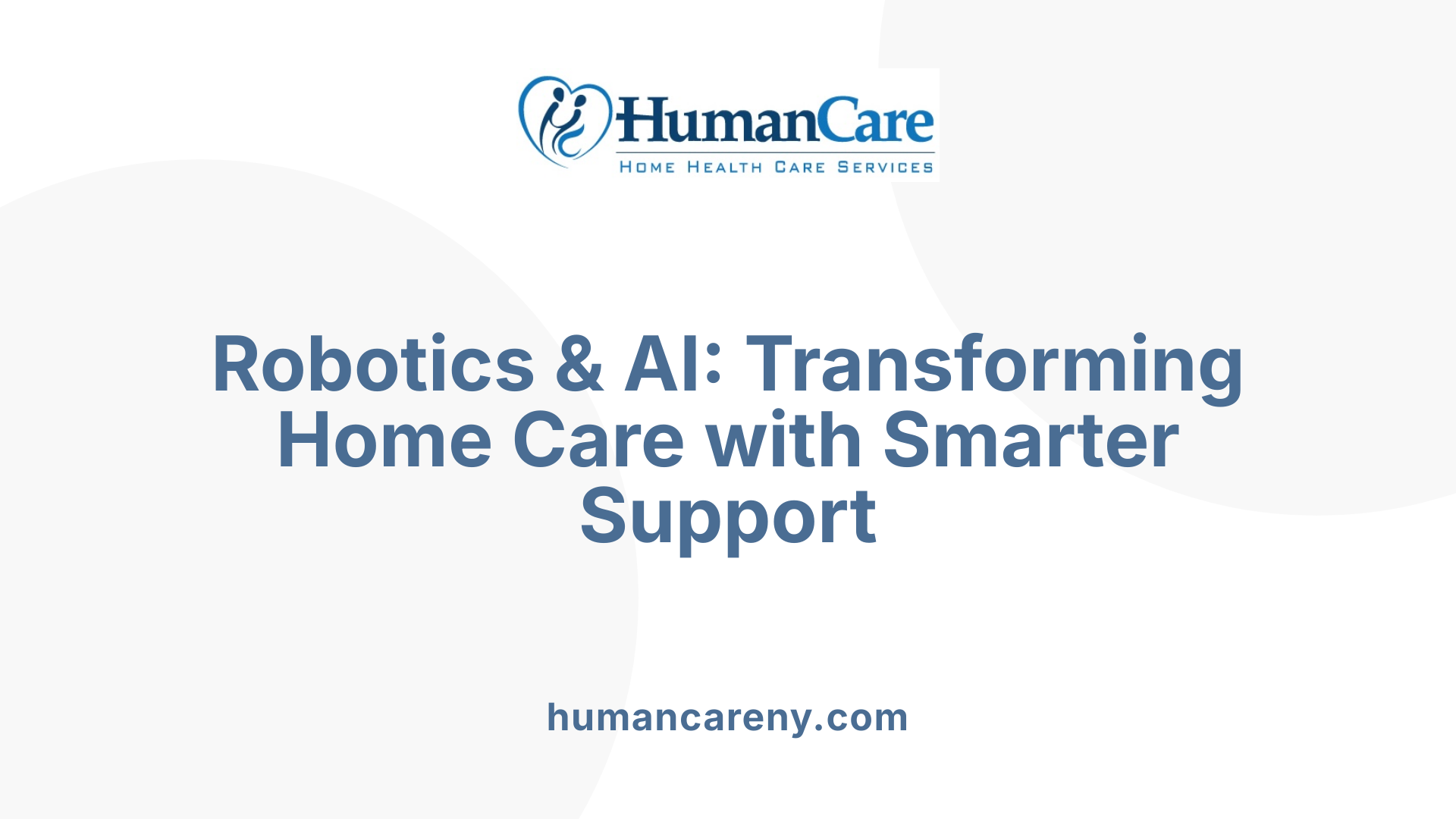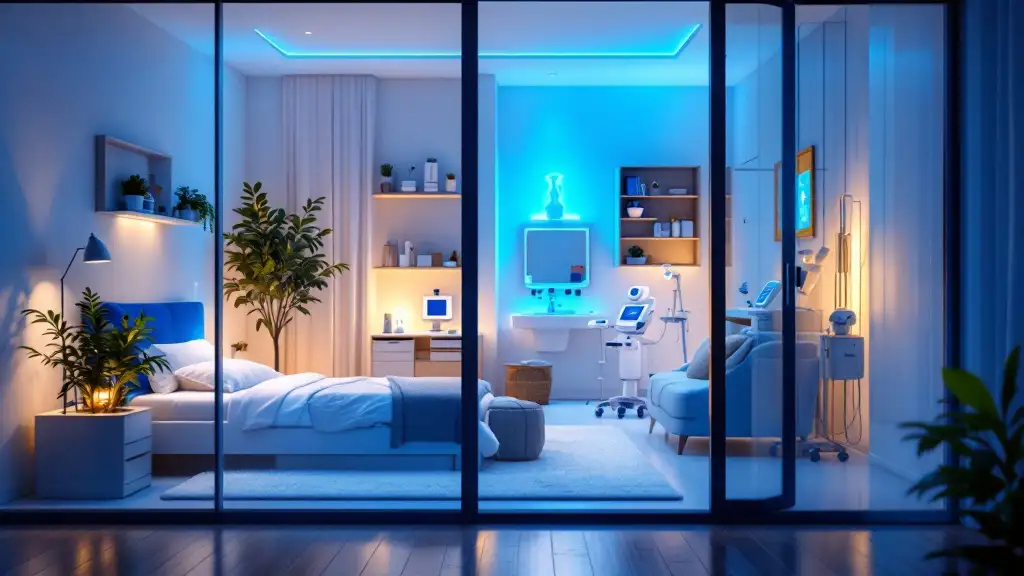Embracing Innovation for Superior Home Health Care
In-home care for seniors and individuals needing assistance has evolved dramatically with advancements in technology. From telehealth to smart home systems, technology is enhancing safety, independence, and quality of life while addressing pressing challenges such as caregiver shortages and rising healthcare costs. This article explores the pivotal role that technology plays in transforming in-home care services, enabling aging in place, improving health outcomes, and supporting both care recipients and caregivers with innovative solutions.
Telehealth and Remote Monitoring: Bridging Distance with Digital Care

How do telehealth platforms aid virtual check-ups and chronic condition management?
Telehealth platforms allow seniors to connect remotely with healthcare professionals via video calls, phone, or online portals. This enables virtual check-ups that assess health without requiring physical visits. Chronic conditions like diabetes or hypertension are managed effectively through frequent virtual monitoring, medication adjustments, and timely consultations.
What role does remote patient monitoring play in home health?
Remote patient monitoring involves digital devices such as heart rate monitors, blood pressure cuffs, and fall detectors that send real-time health data to healthcare providers. This continuous data sharing allows proactive adjustments in treatment and early detection of health issues, reducing complications.
How do telehealth and remote monitoring reduce hospital visits and transportation challenges?
By facilitating timely virtual consultations and health data tracking, telehealth reduces the need for in-person hospital visits. This is especially beneficial for seniors with mobility difficulties or those living in remote areas. It lowers transportation barriers and enables prompt care, potentially preventing severe health episodes.
What was the importance of telehealth during the COVID-19 pandemic?
During the pandemic, telehealth became critical in maintaining access to healthcare while minimizing exposure risk. It supported chronic disease management, mental health care, and acute consultations from the safety of home environments.
What range of telehealth services exists from phone calls to full video consultations?
Telehealth varies from basic phone conversations to advanced video consultations that include visual assessments. Telemonitoring services provide continuous remote tracking of vital signs, complementing synchronous virtual visits for comprehensive care.
How do reimbursement policies affect telehealth adoption?
Financial reimbursement policies influence how widely telehealth is integrated into healthcare systems. Supportive policies can promote adoption by ensuring providers are compensated fairly for virtual care services, encouraging sustained use and innovation.
How does telehealth improve care transitions and patient management?
Telehealth platforms enable smooth transitions between different care settings by sharing updated patient information electronically. Ongoing remote monitoring helps clinicians adjust treatment plans promptly, enhancing overall patient management and outcomes.
Smart Home Technologies Enhancing Safety and Independence

Smart assistants and voice-activated controls
Smart home assistants provide easy-to-use voice commands to control lighting, appliances, and reminders, making daily tasks more accessible for seniors with mobility or cognitive impairments. These assistants can unlock doors, identify visitors remotely, and manage schedules with simple spoken instructions.
Automated lighting and environment adjustments
Automated lighting systems adjust brightness and timing to improve safety by preventing falls and supporting natural circadian rhythms. Temperature and environmental controls can also be programmed to maintain comfort without requiring physical interaction.
Medication management systems including smart pill dispensers
Smart pill dispensers automate medication release at prescribed times, send alerts for missed doses, and track adherence. Caregivers receive notifications if medications are not taken, reducing risks related to non-compliance and improving health outcomes.
Security systems and emergency response
Smart home security integrates camera systems, motion sensors, and alert mechanisms to monitor visitor activity and detect emergencies such as falls, fires, or floods. Embedded sensors in carpets or wearable devices can trigger immediate emergency calls, enhancing real-time response.
Use of embedded sensors and passive monitoring technologies
Passive sensors monitor activity patterns, detect restlessness, and track sedentary behavior without active user input. These technologies provide valuable data to caregivers and health providers while minimizing the burden on seniors.
Benefits of enabling technology for aging in place
Enabling technology promotes safety, independence, and connectivity, allowing seniors to live comfortably in their own homes longer. It helps reduce reliance on institutional care and addresses caregiver shortages by supporting self-management and remote monitoring.
Examples of member stories illustrating tech benefits
Stories like Susan’s automatic door opener improving her mobility, Michael’s voice-activated locks enhancing security, and Ms. Morris’s custom smart home setup demonstrate real-world impact of these technologies in improving quality of life.
Improved functionality and daily living activities
Technology aids with routine activities such as reminder generation, locating objects, controlling lights, and managing appliances, thus supporting daily living and autonomy.
Addressing mobility challenges and cognitive impairments
Voice assistants and automated systems help seniors with mobility limitations or cognitive decline by simplifying interaction with their environment and supporting memory through reminders and consistent routines.
Usability features for seniors including accessibility accommodations
Smart home interfaces are designed to accommodate visual, hearing, and cognitive limitations common in older adults, ensuring accessibility and ease of use to maximize adoption and effectiveness.
Wearable Devices and Advanced Sensors: Real-Time Health Insights

What Types of Wearable Devices Are Used for Seniors?
Wearable health devices commonly used in home care include fall detection sensors, heart rate monitors, and GPS trackers. These devices provide continuous monitoring and immediate alerts in emergencies, making them particularly valuable for seniors with mobility challenges or conditions like dementia.
How Do Physiological Monitoring Devices Help?
These devices capture vital signs such as heart rate, blood pressure, and oxygen levels remotely. They can also detect sleep disturbances and restlessness, offering comprehensive health data that can inform timely medical interventions.
How Are Emergency Alerts Managed?
Advanced wearables often have automatic emergency alert features. For instance, if a fall is detected or abnormal vital signs are recorded, the device can immediately notify caregivers or emergency services, ensuring swift responses.
How Do These Devices Integrate With Care Coordination?
Wearables are increasingly integrated with communication platforms and care coordination apps. This integration allows healthcare providers and caregivers to monitor seniors’ health data in real time and adjust care plans accordingly.
Why Are These Technologies Particularly Beneficial for Seniors With Dementia or Mobility Issues?
Wearable devices promote safety and independence by continuously monitoring health and location. For those with dementia, GPS tracking helps prevent wandering, while fall detection sensors ensure prompt assistance if falls occur.
What Are Active Versus Passive Technologies?
Active technologies require user engagement, such as pressing a button during an emergency. Passive technologies include embedded sensors and automated monitoring systems that function without active user input, providing seamless oversight.
How Do These Technologies Provide Security and Peace of Mind?
Families and caregivers gain reassurance through constant monitoring and immediate alerts to potential health events. This support helps reduce caregiver stress and allows seniors to maintain independence safely.
Artificial Intelligence and Robotics: Augmenting Home Care Services

How is AI used for predictive analytics and personalized care plans?
Artificial Intelligence (AI) has transformed home health care by enabling predictive analytics that anticipate potential health issues before they escalate. Machine learning algorithms analyze vast amounts of health data to develop personalized care plans tailored to each senior's unique needs. This proactive approach empowers healthcare providers to implement preventive measures, reducing hospital visits and enhancing overall care quality.
In what ways do robots assist with daily tasks and companionship?
Robotics play an increasingly supportive role in seniors' daily lives by helping with routine tasks such as medication reminders and household chores. Beyond physical assistance, companion robots provide social interaction, alleviating feelings of loneliness and promoting mental well-being. These interactions, while not replacing human contact, offer meaningful supplementary support especially for those with limited mobility or cognitive challenges.
How does machine learning contribute to proactive health management?
Machine learning facilitates continuous health monitoring by detecting subtle changes in seniors' behaviors or vital signs. This technology can alert caregivers and medical professionals to early signs of deterioration, enabling timely interventions. Through adaptive learning, the systems become more accurate over time, enhancing the reliability of health management at home.
Why is combining technology with human compassion essential for effective care?
While AI and robotics improve efficiency and monitoring capabilities, the compassionate care provided by human caregivers remains irreplaceable. Technology augments caregiving by handling routine or monitoring tasks, allowing human providers to focus on emotional support and personalized care. This balance ensures seniors receive empathetic attention alongside technological benefits.
What are the current limitations and complementary roles of AI and robotics alongside human caregivers?
Presently, AI and robotic technologies cannot fully replicate the cognitive flexibility and empathetic understanding of human caregivers. They serve best as complementary tools that support rather than replace human involvement in care. Limitations include technology acceptance by seniors, privacy concerns, and occasional technical malfunctions, emphasizing the need for thoughtful integration.
What future trends are emerging, including virtual reality for mental health and pain management?
Looking ahead, virtual reality (VR) is emerging as a promising tool for mental health support and pain relief, offering immersive cognitive stimulation and relaxation exercises. The integration of AI, robotics, and VR heralds a future where advanced technologies work hand-in-hand with human compassion to deliver comprehensive, efficient, and personalized home care services.
Supporting Caregivers and Optimizing Care Coordination with Technology

How do caregiver support applications enhance scheduling and organization?
Caregiver support apps simplify the complex tasks caregivers face daily. These tools help manage schedules, track caregiving hours, and organize appointments, making caregiving more efficient and less stressful. By digitizing these responsibilities, caregivers can focus more on providing quality care rather than administrative duties.
What role do Electronic Health Records (EHRs) play in senior care?
EHRs centralize patient medical data, which improves diagnosis accuracy and treatment planning. With comprehensive healthcare history available at their fingertips, providers can deliver tailored care more efficiently. This integration promotes coordinated care and reduces redundant tests or errors.
How do communication platforms improve provider-patient interactions?
Modern communication platforms enable seamless exchanges between healthcare providers and seniors or their caregivers. Features like messaging, video consultations, and remote monitoring support timely interventions and ongoing management, especially important for chronic conditions.
Can social networks and sensor data aid in monitoring seniors' activity and social interactions?
Yes, social networks combined with sensor technologies offer valuable insights. Sensors monitor activity patterns, detect visitor counts, and track sedentary behavior, assisting in assessing seniors’ social engagement and well-being remotely. This data supports proactive measures to reduce isolation.
What privacy and acceptability concerns exist around monitoring technologies?
While monitoring tech offers many benefits, privacy remains a major concern. Seniors and families often worry about data security and constant surveillance. Ongoing research focuses on balancing technology use with respecting privacy and ensuring user consent to increase acceptability.
What are effective strategies to facilitate technology adoption among seniors and caregivers?
Starting with immediate needs and choosing user-friendly, easy-to-integrate solutions helps smooth adoption. Providing training and continuous support encourages seniors and caregivers to embrace new tools confidently, improving success rates.
How does technology help address workforce shortages and improve care quality?
By automating routine tasks and offering remote monitoring, technology alleviates caregiver workload and extends care reach. This support is vital amid workforce shortages, helping maintain high standards of care without increasing strain on caregivers.
What economic benefits arise from integrating technology in home health care?
Innovations in technology can prevent patient decline, reduce hospital admissions, and minimize emergency visits. These outcomes potentially lower overall healthcare costs while enhancing seniors’ independence and quality of life.
| Technology Area | Benefits | Description |
|---|---|---|
| Caregiver Support Apps | Improved organization and scheduling | Helps caregivers track appointments and caregiving hours |
| Electronic Health Records | Centralized data, better diagnosis | Streamlines information access for coordinated care |
| Communication Platforms | Better provider-patient communication | Enables messaging, video calls, and remote management |
| Social Networks & Sensors | Monitor activity and social engagement | Tracks behavior and visitor data to assess wellbeing |
| Privacy Considerations | Ensuring security and consent | Balances technology benefits with ethical use |
| Implementation Strategies | User-friendly tools, training, and support | Facilitates smooth technology adoption |
| Addressing Workforce Gaps | Reduces caregiver burden | Supports care delivery amid staff shortages |
| Economic Impact | Cost reduction and enhanced quality of care | Decreases hospital stays and prevents health decline |
Looking Ahead: The Future of Technology-Driven In-Home Care
Technology continues to reshape the landscape of in-home care services, fostering greater independence, enhancing safety, and improving overall health outcomes for seniors and those needing assistance. Multifaceted innovations—from telehealth and wearable devices to AI and smart home integrations—are enabling individuals to live more comfortably in their own homes while facilitating efficient, personalized care. As these technologies evolve and become more accessible, the synergy between human caregivers and digital tools promises to revolutionize home health care, addressing workforce challenges and escalating costs. Embracing these advancements with thoughtful implementation and ongoing research will be key to unlocking their full potential and ensuring that in-home care remains compassionate, effective, and sustainable.



